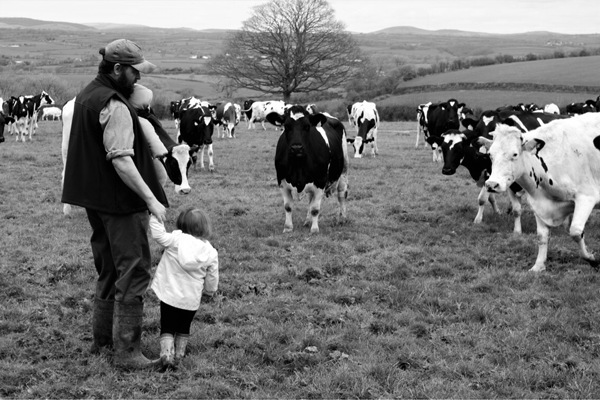
A public speaker tells the story of how he was extremely nervous before giving his first ever sermon, so after he finished his preparation he went into the nearby fields to go over the talk. Seeing a cow near the fence, he decided to practise the talk on the cow. To his great delight, by the end of the talk he had 16 other cows standing at the fence listening to every word he spoke! The speaker was in wonderland!
BY TIM MIDDLETON

Someone else who has been in wonderland was the character in the celebrated children’s fantasy book Alice in Wonderland, written in 1865 by Lewis Carroll. One of the characters that Alice encountered in her adventures came up with the wonderful phrase “Curiouser and curiouser” which links well with a wonderful quotation by Einstein who once said, “I have no special talents. I am passionately curious.” To a degree (but not quite to Einstein’s) cows are curious, are inquisitive; they want to know what is happening. And in a curious way, it is another way that our children should imitate cows (as suggested in a previous article). Children need to develop curiosity.
Curiosity is really a strong desire to know or learn something. It comes from the word “curio” which refers to a “rare, unusual or intriguing object”. What we teach and what our children learn should be intriguing, rare and unusual, not simply what is put in a textbook or syllabus. It should be so intriguing that they want to find out more, to dig deeper, to follow the scent like dogs, to see where it leads. Curiosity is about asking questions and every answer raises further questions. Why is it like that? What is this for? What will happen if we go down this road? What if we were to change this? As many have commented, the more we learn, the more we learn there is so much more to learn.
Curiosity is about looking at different things and not the same things all the time; it is about looking at different things differently and it is about looking at the same things differently. Curiosity is about exploring new worlds, just as famous explorers like Marco Polo and currently Sir Ranulf Fiennes have done. It is about exploring new and possible opportunities, ideas and avenues. It is about exploring the unknown, on our own. It is experimenting, which ultimately leads to experience.
Of course, curiosity does contain some element of risk, of potential danger (we may know the old expression that “Curiosity killed the cat”), and as a result people are reluctant to pursue it; Saint Augustine wrote that God “fashioned hell for the inquisitive” while John Clarke wrote in 1639 that “He that pryeth into every cloud may be struck with a thunderbolt”. People also have a fear of failure, yet it was Thomas Edison, the inventor of the light bulb (along with many other things) who, when criticised for not having success with his experiments, said, “I have not failed. I’ve just found 10 000 ways that won’t work.” He also said that, “When you have exhausted all possibilities, remember this – you haven’t.” Experimentation and exploration need to continue; curiosity needs to be exercised. We can still be curious and cautious.
Our children should not find it difficult as with the internet at their fingertips, they have the means to ask questions and to look for answers. It is not inconceivable that our child cannot be like the character in the “Wonderland” story who exclaimed with delight that, “Why, sometimes I’ve believed as many as six impossible things before breakfast.” That will only come by being curious.
The characters in Alice in Wonderland viewed the curriculum of the time as many today might view our current one: “Reeling and writhing, of course, to begin with, [instead of reading and writing] and then the different branches of arithmetic – Ambition, Distraction, Uglification, and Derision” [instead of Addition, Subtraction, Multiplication and Division] – in other words, it is painful and irrelevant. Our schools should be a wonderland for our children to learn to explore; they should be a city of curios to enliven their curiosity. Instead of putting curiosity in the curriculum, we might wonder and be curious to know what education would be like without a curriculum, only curiosity. How about exploring that idea? Curiosity may have killed the cat but cats have nine lives, so it is worth them being curious – and nowhere does it say that curiosity killed the cow! So let us encourage and enable our children to be curious. After all, Einstein did not do too badly with it.
- Chamisa under fire over US$120K donation
- Mavhunga puts DeMbare into Chibuku quarterfinals
- Pension funds bet on Cabora Bassa oilfields
- Councils defy govt fire tender directive
Keep Reading
Tim Middleton is the executive director of the Association of Trust Schools and author of the book on “failure” called Failing to Win.
email: [email protected]
website: www.atschisz.co.zw











